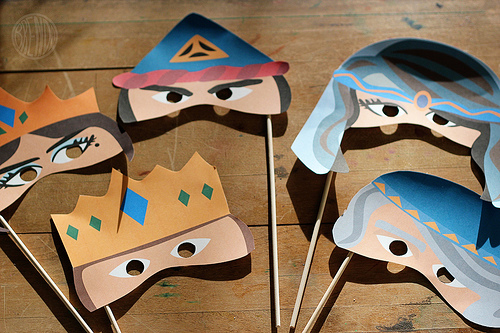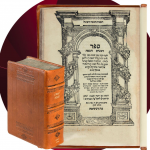Click here to download PDF
Sponsored in Honor of the engagement of Menachem Yisroel Bechhofer & Bracha Golda Lichtman
Why always Titzaveh – Zachor?
In every regular (non-leap) year we read Parshas Titzaveh right before Purim. Therefore, in every regular year it has the supplemental reading of “Zachor” which commands us to remember Amalek’s atrocities towards us and to wipe him out, leaving no trace and no memory of his existence. Titzaveh being also Shabbos Zachor is an ancient custom mentioned in Rambam’s Hilchos Tefillah. What is the meaning behind this ancient custom?
Moshe Goes Nameless
In this week’s Parsha, Moshe’s name is never mentioned, even though Hashem is constantly giving him orders. Moshe is called “and you…” throughout the Parsha! Ironically, he is getting the “Amalek treatment”, having his name conspicuously absent. Why does this happen in the Parsha most often connected to “Zachor”? This is especially ironic as Moshe played such a crucial role in the initial war against Amalek.
Where is Moshe?
In the first war against Amalek, Moshe held up his hands in prayer. The Mishna in Rosh Hashana explains that his hands raised in prayer was necessary to remind the Jewish people of Hashem and to subjugate their hearts to Him – only then they can win. Where is Moshe in all the ensuing wars against Amalek, as foretold in Parshas Beshalach “ Hashem will wage war against Amalek from generation to generation”? The Gemara (Chulin 139 ) asks where is an allusion to Moshe before he was born? After revealing the allusion, the Gemara then makes enquiries as to allusions to the key characters in the story of Purim(!) – further accentuating Moshe’s eternal role in defeating Amalek. But how? Where is Moshe ever since the first war with Amalek?
Why Shabbos?
Our custom is to fulfill the annual mitzvah “Zachor”, remembering the atrocities of Amalek and our obligation to wipe them out, on the Shabbos before Purim. The reason why it’s done on the Shabbos before and not on Purim itself ,which is the holiday of victory over Amalek, is based on the pasuk in Megillas Esther “… and these days are remembered and performed….” the remembering (Zachor) must proceed the performance on Purim. The question remains: why don’t we do “Zachor” the day before Purim? why is it pushed back to the Shabbos before?
Shabbos & Amalek: Full vs Empty
The Midrash Tanchuma on Parshas Ki-Tetzeh points out an interesting irony. We have a mitzvah to remember Shabbos (Kiddush) and a mitzvah to remember the atrocities of Amalek and to wipe them out of existence (Zachor). It is an amazing irony that the most beloved day and special gift from Hashem to the Jewish people gets the same treatment as Amalek, the arch enemy of Hashem and the Jewish people! the Midrash explains with a metaphor: A king made a huge feast for all his friends. When the tables were laden with lots of good food and drink the king says: “let’s remember ‘so and so’ who I love”. After all the food and drink has been consumed and the tables are empty the king says: “Let’s remember ‘so and so’ who I hate”. The attendees asked the king: “You gave them equal treatment! You remembered both the one you love and the one you hate?”. The king answered: “This one I remembered over a full table and this one I remembered over an empty table”. So also, we remember Shabbos when we make Kiddush over a table Laden with all good food and drink, a full table. We remember Amalek in the context of wiping them out and leaving them no memory. Shabbos is “full”. It gets us in touch with reality. Through Shabbos we appreciate creation and recognize its Creator and our obligation to serve Him. Therefore Kiddush (remembering Shabbos) must be recited over a full table, representing all reality that is. Amalek is remembered (Zachor) in the context of wiping out any trace of them, not even leaving a memory of them. In other words – deleting them from reality! Reality must be ‘emptied’ of Amalek! We cannot ‘be real’ with the emptiness of Amalek if we don’t have an appreciation of the fullness of reality! We need Shabbos to get us in touch with reality. Shabbos gives us context to truly see Amalek for the ‘nothing and empty’ that he truly is!
Shabbos and Torah
“Everyone admits that the Torah was given on Shabbos” (Shabbos 87). Shabbos is in time what Torah is in space and in our souls. Shabbos is the time to experience the truths of the Torah. ‘Getting real’ that there is a Creator and we must serve him. We must be worthy of the clarity the Torah revealed and is experience during Shabbos. In preparation for the Torah we declared “Naaseh V’Nishma” – we are committed to doing the Mitzvos even before we attain a intellectual appreciation for them. This means: Committed to the truth as immutable truth! Truth remains the truth whether we merit having an intellectual appreciation of it or not. Being pre-committed to the Torah as immutable truth is why we subsequently merit to understand and appreciate it , even though it is infinite intelligence!
Hands over the Head
Being committed to doing prior to fully grasping the depths is the equivalent of saying: “raising the hands over the head”– the hands will perform even before the depths of understanding reaches the mind! This is the clarity that Moshe was providing us when he had his “hands over his head” in prayer at the time of the war against Amalek. He gave us a constant reminder that there is a Creator whose Torah is absolute truth and therefore we must be totally pre-committed to serving Him. Moshe infused us with the power we attained by declaring “Naaseh V’Nishma”, through which we merited to get the Torah and its parallel, the Shabbos. Ever since we merited to have the Torah, which was giving on Shabbos, Shabbos gives us the clarity that Moshe gave us at the time with his hands over his head.
Moshe & Shabbos
Moshe is still involved, until this day! At the time of Matan Torah we were awarded two crowns, one for “Naaseh” and one for “Nishma”. Because of the sin of the golden calf we lost those crowns, representing the loss of the level we attained by saying “Naaseh V’Nishma”. As powerful as Shabbos is, it would no longer be able to help us, because of how low we fell. However, the Midrash in Parshas Ki-sisa tells us that on Shabbos Moshe gives us those crowns back, thus magnifying the power of Shabbos to help us regain our original clarity, even in our current lowly state. This is why we say in the shacharis of Shabbos: “Moshe is happy with his portion…” because in truth he holds all the crowns of all the Jewish people (that’s why his face beamed with light from the time he brought the second set of Luchos), but on Shabbos he is happy with only his own two crowns and returns the rest of the crowns to the Jewish people. On Shabbos Moshe enables us to feel the fullness of Shabbos by restoring the clarity of “Naaseh v’Nishma” which is the clarity of “hands over head”!
Separate and on top
Shabbos is the eternal sign between us and Hashem, it is special for the Jewish people. Gentiles may imitate and practice any of our Mitzvos, but not Shabbos! Similarly, gentiles may not learn Torah. This is because Shabbos and Torah are parallel realities, as explained above, and are ‘special’ for the Jewish people. The reality of Torah and the reality of Shabbos are ‘uniquely Jewish’ in their character. These two powers keep the Jewish people from assimilating with all the other nations. This is alluded to in the commandment of the oil for the menorah at the opening of this week’s Parsha. The Midrash says that the Jewish people are compared to the olive because the oil of the olive does not mix with any other liquid and always rises to the top, so also the Jewish people cannot mix with any other nation and will always be on top. Everybody hates the “guy on top”….The oil and light of the Menorah represent Torah learning “candle is a Mitzvah and Torah is light” (Mishlei)
Internalizing Moshe
Moshe, the giver of the Torah, forever gives us a connection with the power of Shabbos and the clarity of the Torah. This prevents our assimilation and gives us victory over (on top) other nations! Moshe is not referred to by name as a separate individual, he’s called “and you”. In this week’s Parsha Moshe is assimilating and being internalized within the Jewish people. The word “Tetzaveh” – command can also be from the root “Tzavta” – connection. Hashem was saying: ”and you will connect and be added to the eternal collective of the Jewish people! Everything in this Parsha, from the opening with the oil of the menorah through the sanctity of the priesthood are all functions of the innate sanctity of the Jewish people. Moshe is forever the medium to transmit that spiritual power to us, no matter how low the Jewish people fall. Moshe is not mentioned by name because he is forever totally integrated within the eternal reality of the Jewish people. This is the opposite of Amalek! Amalek’s name will be blotted out as a function of his removal from reality. Parshas Titzaveh explains how Moshe is eternally with us in all our wars with Amalek and he shines in us on Shabbos in general and on the Shabbos before Purim in particular.
Good Shabbos.










